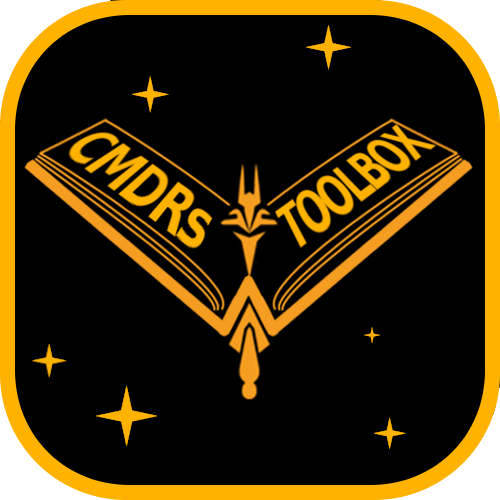Part B concerns dos and don'ts of shield engineering. This is all in the context of PvE, I don't do PvP. Also this is more about theorycrafting and dogmatism, I know pretty much everything in PvE works, that's not the point. Please bear with me, this might get lengthy and I might question established "rules". Sorry for that.
I'm a Bi-Weave man, and while researching if I want to use Prismatics or keep sticking to Bi-Weaves I read a lot of opinions saying that my way of engineering is "wrong", even for PvE, and engineering Bi-Weaves like normal shields is stupid, and people who do that smell bad. Of course I know the premise of Bi-Weaves is: Low health pool, quick recharge, use them factoring in you might lose them but get them back quickly. Here is how I understood what I read:
Engineering Bi-Weaves with reinforced/hi-cap, which is what I usually do, is apparently "wrong", because with a large health pool and possibly too many boosters you defeat the quick recharging because you drain the capacitor.
Now this is not wrong, when I turn off my shields and then let them rebuild I do drain the capacitor, and charging the shields with a larger health pool from the empty capacitor does of course take longer than charging a small health pool from just the full capacitor.
Now my experience, at least with the ships I fly, is that, even with the issue of the draining cap, the recharging is still significantly quicker than that of normal shields with a comparable health pool and resulting shields after resistances, with the added benefit of lower power consumption. I never really thought about it until I fell into this rabbit hole last night, for me using Bi-Weaves but still building a strong health pool was a no-brainer. We're talking up to halving the recharge time with Bi-Weaves, which I find rather significant. And the higher health pool makes ramming viable with Bi-Weaves too.
Is this working well for me because of the ships I fly? Is my way of doing it disastrous in other ships? For some numbers, we're talking about shields around 1000 to 1500 MJ before resistances and PIPs on ships like the Krait II, the Viper IV, and of course the Mandalay and the Cobra V. These are the ships I do PvE combat in.
I do my pew pew, including reckless ramming, rarely ever lose my shields completely, but have them restored from 25 or 50 percent rather quickly between skirmishes. I had a Frag Mamba I am not using anymore that had normal A-Rated shields with, again, similar raw strength, and that one always took an eternity to recharge.
Am I missing something vital? Or is this just people on YT and Reddit spreading dogmas and doing "this is how you do it, period!" nonsense?
Even though it works well for me (and yes, I know, everything goes in PvE), I feel like I am missing something.
Prismatics allows you to pack more up-front MJs in a given optional slot, at the cost of sacrificing your passive regen. This makes it ideal for trading and mining ships, who will be frequenting stations to recharge if necessary, and potentially assassination ships where your goal is not sustained durations of combat, only short bursts.
Shielding hitpoints can be inflated by stacking shield boosters, SCBs, GSRPs, and engineering. Passive regen can
only be improved by use of Bi-weaves and fast charge/lo draw on the engineering special.
Whether to use fast charge or lo draw depends entirely on your distributor size relative to the shield generator (and this will all be presuming you are using charge enhanced + super conduits, as the practical reasons to using anything else on PD are specific & niche in nature). You can try doing the math on recharge rate + distro draw per point of shielding yourself, but the breakdown is that if the shield generator size is greater than your PD, you
will require more than 2 pips in SYS to maintain passive regen, whereas same size or lower than your PD, 2 or less pips will sustain your regen.
Lo-draw is worth considering even in the case of PD size being greater, as lowering your SYS distro 'pressure' will open up more pips to put in ENG & WEP as you see fit more of the time - and it also reduces your power draw, on one of the most power-hungry parts of a given combat ship.
The rebuild time is often something I see players over-prioritize and misunderstand; it's not a bad thing for that number to go up, because it means you have more shielding. And with the help of GSRPs, every ship in the game can be turned into a viable shield tank where you can absolutely count on your shields never dropping. If your shields do drop, it's a good case to pause from combat and escape to supercruise to let them rebuild for a bit, if not simply visit a station and come back.
Hi-cap increases the distro draw per point of shielding. That's why it conflicts with the whole point of using biweaves + fast charge/lo-draw in the first place. It matches up with the use cases for Prismatics.
~~
There are essentially 2 ways to set up engineering on shielding + boosters: the "thermal resist shield gen" way, with 50/50 split of HD + resist aug shield boosters, which emphasizes more your effective MJs against thermal/kinetic (explosive damage is not a real threat especially in PvE) and has higher overall resists than the other option, which is the "reinforced shield gen" way with 1 thermal resist shield booster + 1-2 resist aug shield boosters and the rest HD.
The end goal of each method is the same - highest effective up-front MJ amounts, which is very comparable between the two; the difference is the reinforced setup nets you higher raw/absolute, making you more secure against frequent ramming or being hit by PAs, but leaves you with lower overall resists, making your regenerated MJs less valuable.
If you are competent pilot and don't over-use ramming without 4 pips in SYS, I recommend the thermal gen setup, which is also nice and simple to plan for with the 50/50 rule of thumb instead of fiddling on EDSY every time to see what makes sense with how many resist boosters to use.
~~
There could be a couple reasons you are seeing your shielding restore quickly between skirmishes: low shielding amounts (less shielding there for your passive regen to restore => less time taken to restore, i.e., NOT really a good thing), or you are frequenting time in supercruise or at stations (which both greatly increase shield passive regen).
Shield regen rates relative to size class, after a certain point, go up - with normal shields, only size 6 and up start seeing higher regen rate (above 1/s), whereas with Bi-weaves it improves from size 5 on up (above 1.8/s), and prismatics it is size 7 on up (above 1/s).
The other factor remaining here (aside from the amount of your shielding, of course) is simply your PD size and how well it can sustain the SYS draw of your shield's passive regen.
~~
A lot of people on YT, reddit, and discord get this stuff wrong. Shielding is very complicated and it is difficult to pin down, and it is not at all helped out by the great amount of misinformation out there (most infamously is D2EA and his "Cucumber" build based on erroneous conclusions he drew from his own shielding tool, which is very challenging to configure in a way that it displays results that are correct to actual practice in game and has caused a large amount of the confusion around optimal shielding).
It doesn't help either that several Elite community discords are often inhabited by elitists and bad-mannered people who do not communicate by the Golden Rule, and who do not provide fact-based evidence or rationale to help other players reach informed conclusions & choices about what options are present in the game with full opportunity costs in mind. (Or that there's a certain subset of players who get decidedly touchy about advice on mechanical game knowledge, further complicating the whole overall conversation.)
But, there are also a number of good discords to be in, it's not all bad.


